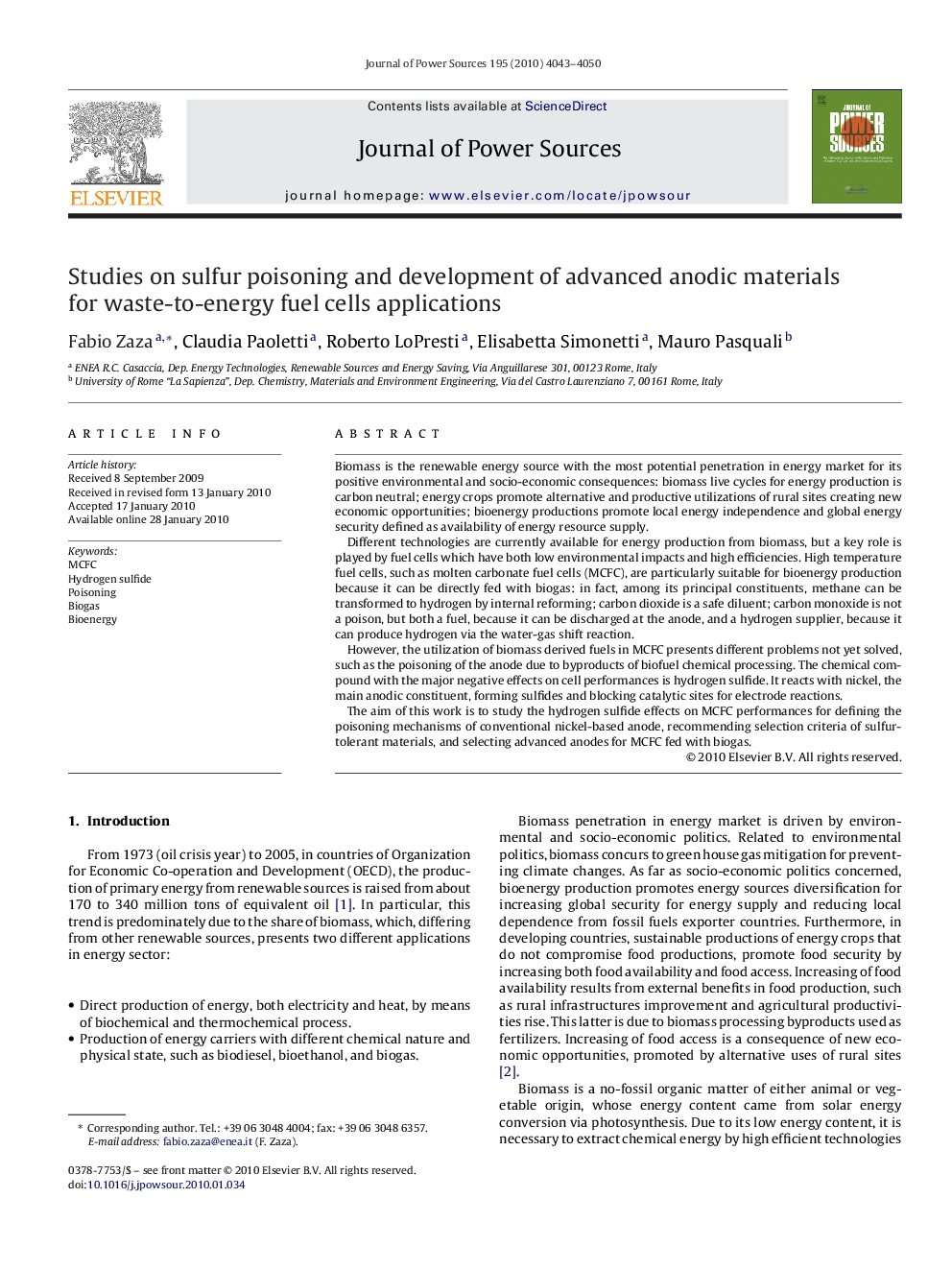| Article ID | Journal | Published Year | Pages | File Type |
|---|---|---|---|---|
| 1290327 | Journal of Power Sources | 2010 | 8 Pages |
Biomass is the renewable energy source with the most potential penetration in energy market for its positive environmental and socio-economic consequences: biomass live cycles for energy production is carbon neutral; energy crops promote alternative and productive utilizations of rural sites creating new economic opportunities; bioenergy productions promote local energy independence and global energy security defined as availability of energy resource supply.Different technologies are currently available for energy production from biomass, but a key role is played by fuel cells which have both low environmental impacts and high efficiencies. High temperature fuel cells, such as molten carbonate fuel cells (MCFC), are particularly suitable for bioenergy production because it can be directly fed with biogas: in fact, among its principal constituents, methane can be transformed to hydrogen by internal reforming; carbon dioxide is a safe diluent; carbon monoxide is not a poison, but both a fuel, because it can be discharged at the anode, and a hydrogen supplier, because it can produce hydrogen via the water-gas shift reaction.However, the utilization of biomass derived fuels in MCFC presents different problems not yet solved, such as the poisoning of the anode due to byproducts of biofuel chemical processing. The chemical compound with the major negative effects on cell performances is hydrogen sulfide. It reacts with nickel, the main anodic constituent, forming sulfides and blocking catalytic sites for electrode reactions.The aim of this work is to study the hydrogen sulfide effects on MCFC performances for defining the poisoning mechanisms of conventional nickel-based anode, recommending selection criteria of sulfur-tolerant materials, and selecting advanced anodes for MCFC fed with biogas.
